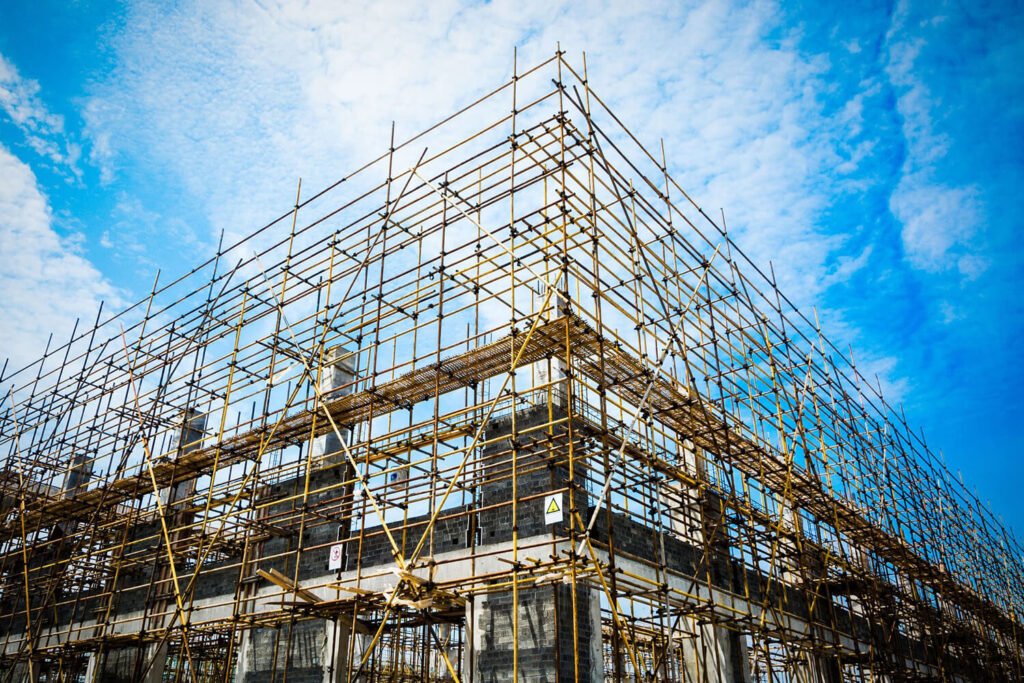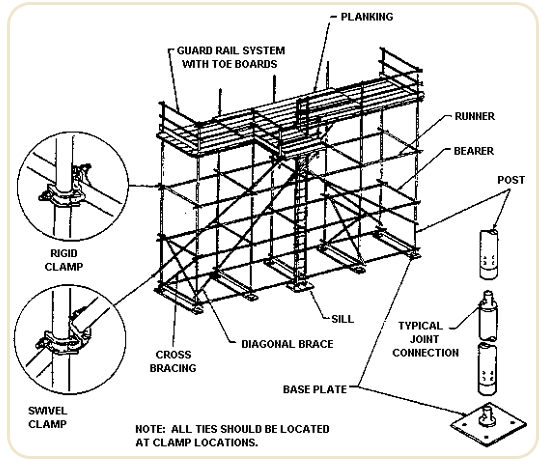Find Reliable Scaffolding Services in Surrey for Your Project Needs
Find Reliable Scaffolding Services in Surrey for Your Project Needs
Blog Article
A Comprehensive Guide to the Necessary Features of Scaffolding in Modern Construction
The landscape of modern-day building increasingly depends on reliable scaffolding systems that focus on safety, efficiency, and innovation. As tasks expand in intricacy, understanding the essential attributes of scaffolding comes to be critical for making certain worker safety and optimizing job timelines. This guide checks out different kinds of scaffolding, highlights vital security functions, and examines material developments that add to efficiency and sustainability. The ramifications of these components extend far past simple building methods, triggering a more detailed look at how they influence total task success and worker wellness.
Sorts Of Scaffolding
Although scaffolding systems can differ commonly in layout and application, they normally fall into several distinct groups that accommodate various construction demands - Scaffolding. One of the most typical types include supported scaffolding, suspended scaffolding, and rolling scaffolding
Sustained scaffolding contains systems sustained by a framework of poles, which offer a raised and secure working surface area. This kind is typically utilized for jobs that call for considerable elevation, such as bricklaying or external paint.
Put on hold scaffolding, conversely, is used for tasks requiring access to high elevations, such as cleansing or repairing building facades. This system hangs from one more structure or a roof, enabling workers to reduced or elevate the platform as needed.
Rolling scaffolding features wheels that permit for very easy mobility throughout a job site. It is specifically beneficial for tasks that call for constant relocation, such as interior operate in huge areas.
Each kind of scaffolding is made with particular applications in mind, making certain that building and construction projects can be brought out successfully and effectively. Understanding these groups is crucial for selecting the suitable scaffolding system to fulfill both project needs and website conditions.
Key Safety Features
Security is vital in scaffolding systems, as the potential risks related to operating at heights can lead to serious crashes if not appropriately handled. Key security functions are necessary to guarantee the well-being of workers and the integrity of the building and construction site.
Most importantly, guardrails are critical. These obstacles provide a physical safeguard against falls, considerably minimizing the risk of severe injuries. In addition, toe boards are often used to stop tools and products from diminishing the scaffold, protecting employees below.
Another essential component is the usage of non-slip surface areas on systems. This function improves grasp, especially in adverse climate condition, thereby reducing the possibility of falls and slips. Moreover, accessibility ladders ought to be firmly positioned to facilitate secure access and leave from the scaffold.
Normal inspections and maintenance of scaffolding systems are also vital. These evaluations ensure that all components are in great condition and operating correctly, attending to any wear or damage quickly.
Lastly, appropriate training for all workers associated with scaffolding procedures is important to make certain that they comprehend safety and security procedures and can determine prospective dangers. Scaffolding. Collectively, these features develop a safer working environment and significantly minimize dangers related to scaffolding
Product Developments
Developments in material science have actually dramatically affected the scaffolding industry, boosting both safety and security and effectiveness in modern-day building and construction. The intro of high-strength steel and light weight aluminum alloys has actually revolutionized conventional scaffolding systems. These products are not only lighter, making them simpler to transfer and put together, yet additionally supply superior load-bearing capacities. This results in scaffolding structures that can support greater weights while lessening the danger of collapse.
Furthermore, innovative composite materials, such as fiberglass-reinforced plastics, have actually emerged as viable options. These products are resistant to rust and environmental destruction, therefore expanding the lifespan of scaffolding systems, especially in harsh weather conditions. Using such materials adds to lower upkeep costs and guarantees consistent efficiency gradually.


Style Considerations
Considering the intricacies of contemporary building tasks, effective scaffolding layout is extremely important to guaranteeing both performance and security. Layout considerations must encompass different elements, including lots capability, elevation, and the details requirements of the building and construction site. Each job provides one-of-a-kind difficulties, requiring a versatile technique to scaffolding systems that can adjust to varying problems.
Structural honesty is critical; for that reason, designers should compute the lots that the scaffolding will support, including employees, products, and devices. The choice of products plays a crucial function in ensuring the scaffolding can hold up against these lots while remaining resilient and light-weight. Furthermore, the style needs to permit easy accessibility and egress, helping with the smooth movement of materials and personnel.
Safety and security features, such as guardrails and non-slip surfaces, should be incorporated to reduce threats of crashes. Additionally, the layout must think about the surrounding environment, consisting of surrounding structures and possible hazards. By resolving these style factors to consider, building firms can enhance the effectiveness of scaffolding systems and advertise a more secure working setting, inevitably contributing to the check this site out general success of the task.
Upkeep and Examinations
The efficiency of scaffolding systems extends past preliminary style and application; ongoing upkeep and regular assessments are important to guaranteeing their continued efficiency and safety throughout the period of a job. Regular inspections should be carried out by qualified employees to recognize any kind of indicators of wear, damage, or instability that could jeopardize the honesty of the scaffolding.
Maintenance procedures ought to consist of routine checks of structural parts, such as planks, fittings, and frameworks, guaranteeing that all components continue to be free and protected from corrosion or other damage. Additionally, the functionality of security features, such as guardrails and toe boards, have to be analyzed to make sure compliance with safety and security policies.
Documents of all assessments and maintenance additional hints tasks is vital for liability and regulative compliance. An organized method to record-keeping not only aids in tracking the problem of the scaffolding yet likewise supplies needed proof in case of an occurrence.
Ultimately, developing a thorough maintenance and evaluation timetable will dramatically reduce the danger of mishaps and boost the general security of the construction website. By focusing on these practices, building managers can safeguard employees and maintain the task's honesty.

Conclusion
In final thought, the essential attributes of scaffolding in modern-day building and construction include a series of vital elements, consisting of image source varied types, vital safety mechanisms, product innovations, and thoughtful style factors to consider. Emphasizing safety via guardrails and non-slip surfaces, together with improvements in products like high-strength steel, boosts both efficiency and sustainability. Regular upkeep and evaluations are vital for making certain structural honesty and safety and security on building websites, inevitably helping with efficient job execution and promoting the health of workers.
The landscape of modern-day construction increasingly counts on reliable scaffolding systems that prioritize advancement, safety and security, and efficiency.Developments in material scientific research have considerably affected the scaffolding sector, improving both safety and efficiency in modern building. In general, these product developments not just enhance the efficiency and safety and security of scaffolding systems yet likewise straighten with the industry's push in the direction of sustainability, as several contemporary materials are made to be extra ecologically pleasant.
Taking into consideration the complexities of modern building and construction tasks, efficient scaffolding style is critical to ensuring both functionality and security.In conclusion, the vital attributes of scaffolding in modern building encompass a variety of important aspects, including diverse types, crucial safety and security mechanisms, material developments, and thoughtful style factors to consider.
Report this page